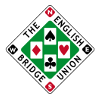
There are a number of clubs that are either struggling a bit or at least concerned for their future. Head winds include an aging membership and the fallout from Covid such as the surge in online playing and some members simply not returning.
If this sounds to an extent like your club, then you are not alone and there may well be others in your general vicinity in much the same boat: small clubs without the resources of a large one, typically single session, lacking the full tech (duplimating machine/bridgemates), little or no teaching and a limited number of volunteers.
There is no universal/guaranteed full answer to this but there is something that has been done in and around Gloucestershire that has brought some benefit to this type of situation.
In a nutshell what it was is getting small and smallish local clubs together and pooling their ideas and enthusiasm to recognise that, although small individually, by acting together they are actually a “big club”. Not talking about mergers here but joint actions for joint benefits.
The initial process was that I bought a large scale map of the county and put stickers on it for each club’s location. This showed that while clubs were widespread, there was something of a cluster pattern in certain parts. Within a radius of about 7 miles there were three clusters, in fact four if two clubs just over the county boarder were included. We have initiated three so far: a group of clubs were invited by the County Bridge Association (CBA) on a Sunday for a discussion about their situation, tea was provided and my wife baked a cake. A pleasant chat and a getting-to-know-you session quickly developed into “what can we do to boost bridge in this area”. I’ve found in the past from work that typically when you get a group together who are interested and involved in some topic or other a good discussion ensues, ideas come up and enthusiasm is stoked. Same with bridge. Action plans included such as the following:
- Advertising and promotion plan: local press, the free EBU posters, local social media and spreading the word via club membership.
- Setting up teaching where there was none, either from within the cluster clubs or by bringing in teachers from elsewhere in the county.
- Investigation of shared tech.
- A collective email address for the cluster to aid communication and liaison.
- Identifying or designating a “nursery slope” type session for novices.
- Reaching out to the local U3A.
- Listing all the local alternatives for bridge in that neck of the woods.
- A focus on the support that the CBA can give including on TD matters, grants/loans, the sharing of teaching experiences and anything else that we can do to help.
It demonstrates via facilitation and support the relevance and value of a CBA and more importantly it can help more people enjoy our game.
Ian Sidgwick, EBU Board member
